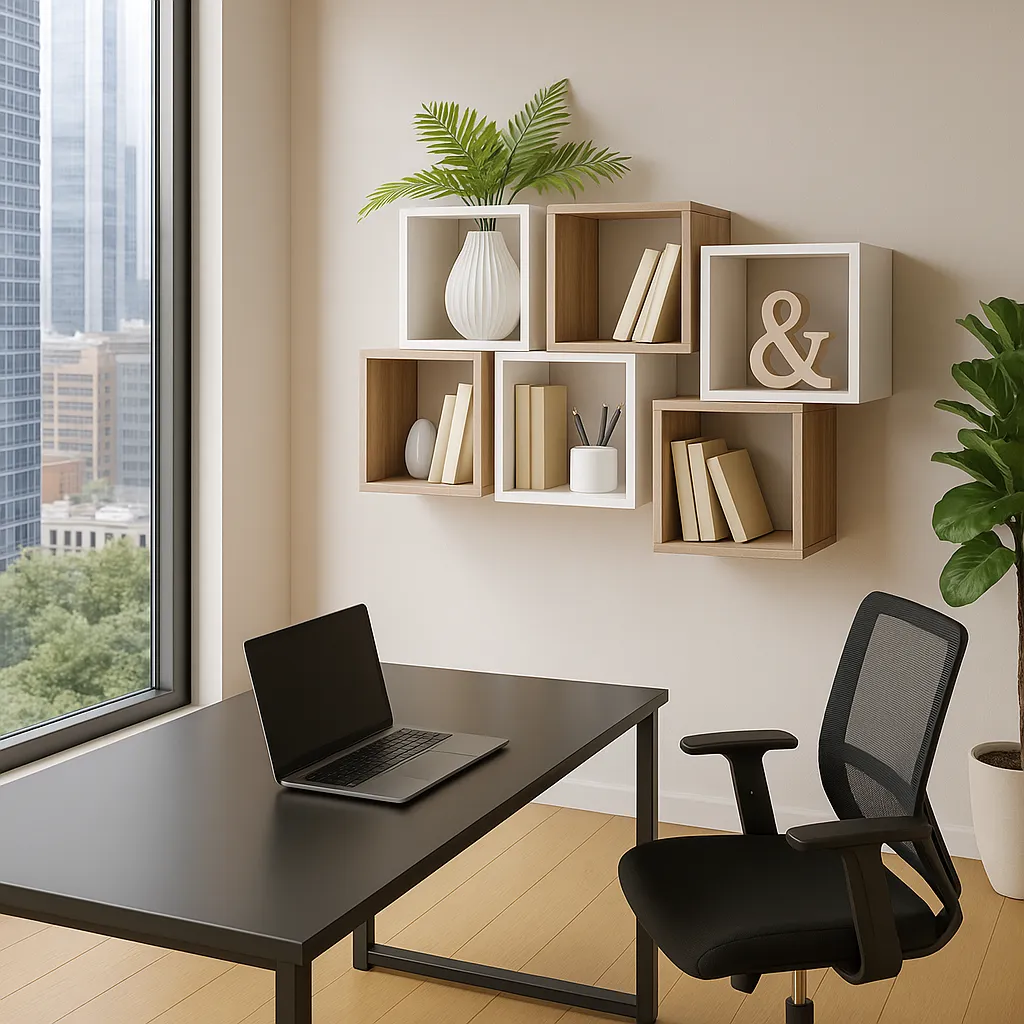Top 5 Shelf Layout Ideas for Small Office Spaces
Designing an efficient small office requires maximizing every inch of available space. Wall-mounted shelves are an excellent solution for improving storage without compromising floor area. Whether you’re working from home or setting up a compact commercial space, choosing the right shelf layout can help create a productive and visually appealing environment.
In this guide, we’ll explore five shelf layout ideas specifically tailored for small offices. These ideas will improve storage functionality, reduce clutter, and elevate your workspace design.
1. Floating Shelves Above Desks
Why It Works
Placing floating shelves above desks utilizes vertical wall space while keeping work surfaces free from clutter. This layout is perfect for storing office essentials, décor, and small plants.
Ideal Use Cases
- Home offices
- Desk clusters in open-plan layouts
- Studios and coworking spaces
Tips for Execution
- Install shelves at least 18 inches above the desktop.
- Use 2-3 staggered shelves for a layered, balanced look.
- Choose solid wood wall shelves to ensure durability.
Explore more on the Wall Storage Solutions.
2. Corner Shelf Units
Why It Works
Corner shelving takes advantage of underused nooks and awkward angles. It helps maximize floor plan efficiency and adds visual interest.
Ideal Use Cases
- Tiny private offices
- Home workstations in bedrooms
- Reception or entry areas
Tips for Execution
- Opt for L-shaped floating shelves or stackable corner units.
- Place near windows or lights to enhance display value.
- Match finishes with desks or filing cabinets.
3. Vertical Shelf Towers
Why It Works
Tall, narrow shelving units provide ample storage while occupying minimal floor space. These are perfect for paperwork, books, and even tech accessories.
Ideal Use Cases
- Tight walkways or beside doorways
- Small manager rooms
- Office pantries
Tips for Execution
- Use adjustable-height shelves to accommodate varying item sizes.
- Secure to the wall to avoid tipping hazards.
- Combine with storage solutions for efficient categorization.
4. Modular Wall Grids
Why It Works
Modular shelving systems offer flexibility and customization. You can rearrange shelves, hooks, and bins based on changing needs.
Ideal Use Cases
- Team workstations
- Creative agencies or design studios
- Dynamic startups
Tips for Execution
- Choose lightweight woods or metal-wood hybrids.
- Mix open shelves with closed cubbies.
- Pair with matching desk clusters for a unified workspace.
For modular layouts, see the Team Workstations.
5. Under-Window Shelving
Why It Works
Many offices have unused space under windows. Installing low-profile shelves here transforms the space into a functional zone for files or decor.
Ideal Use Cases
- Shared spaces with natural light
- Small corner offices
- Offices lacking upper wall space
Tips for Execution
- Use 10–12 inch deep solid wood shelves.
- Ensure materials are sealed against UV exposure.
- Coordinate wood tone with nearby furniture pieces.
Choosing the Right Wood for Shelves
Each of these layout ideas benefits from using the right type of wood. Consider options like oak for strength, maple for a minimalist look, and walnut for executive style. Learn more in our article on Best Wood Types for Durable Office Wall Shelves.
Final Thoughts
In small office environments, well-planned shelving is more than a design element—it’s a necessity. Floating shelves, corner units, vertical towers, modular grids, and under-window storage all offer unique advantages depending on your workflow and floor plan.
At Pnstime.com, we offer a full collection of solid wood wall shelves, desks, filing cabinets, and desk clusters tailored for modern, compact workspaces.

